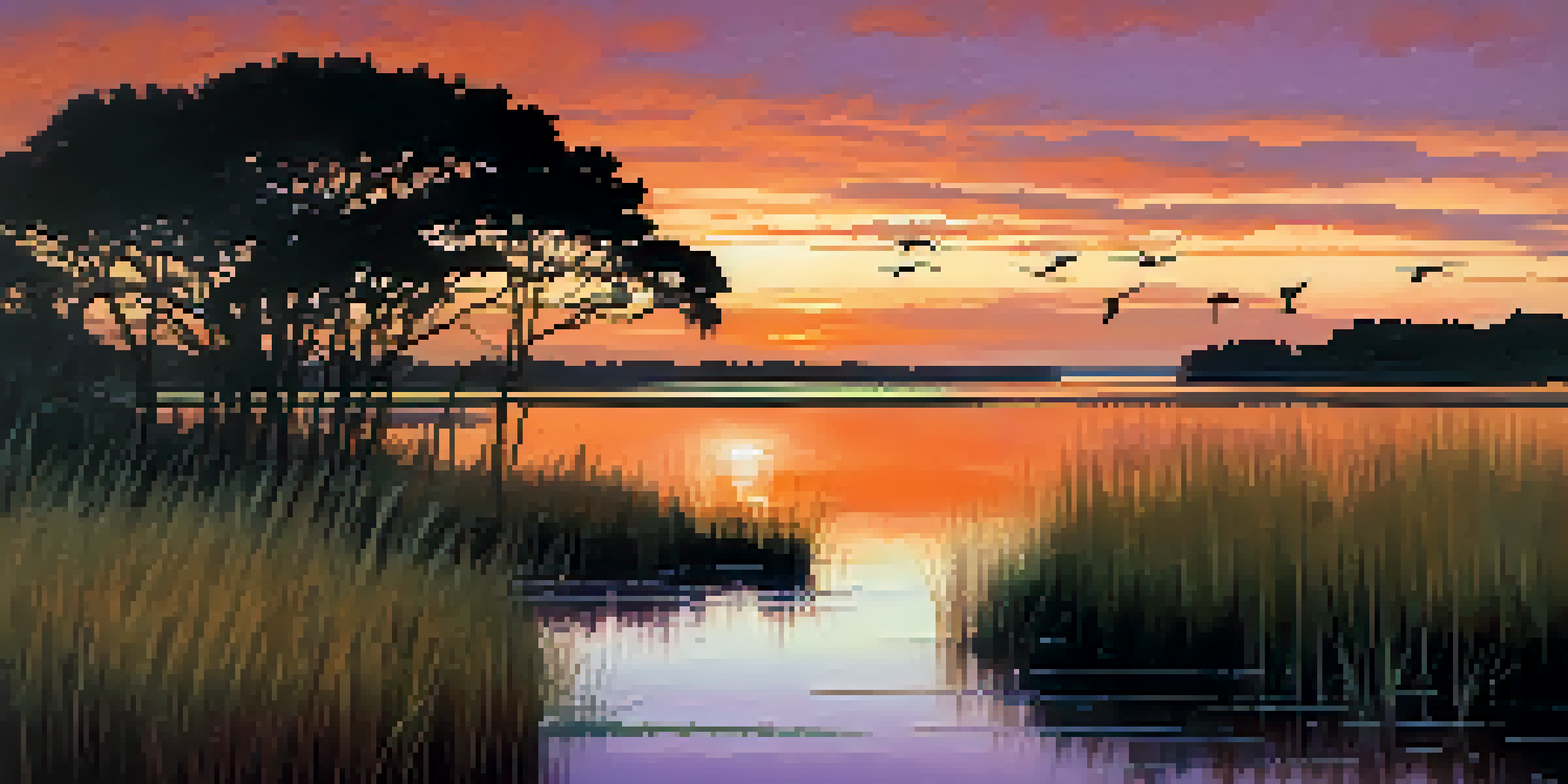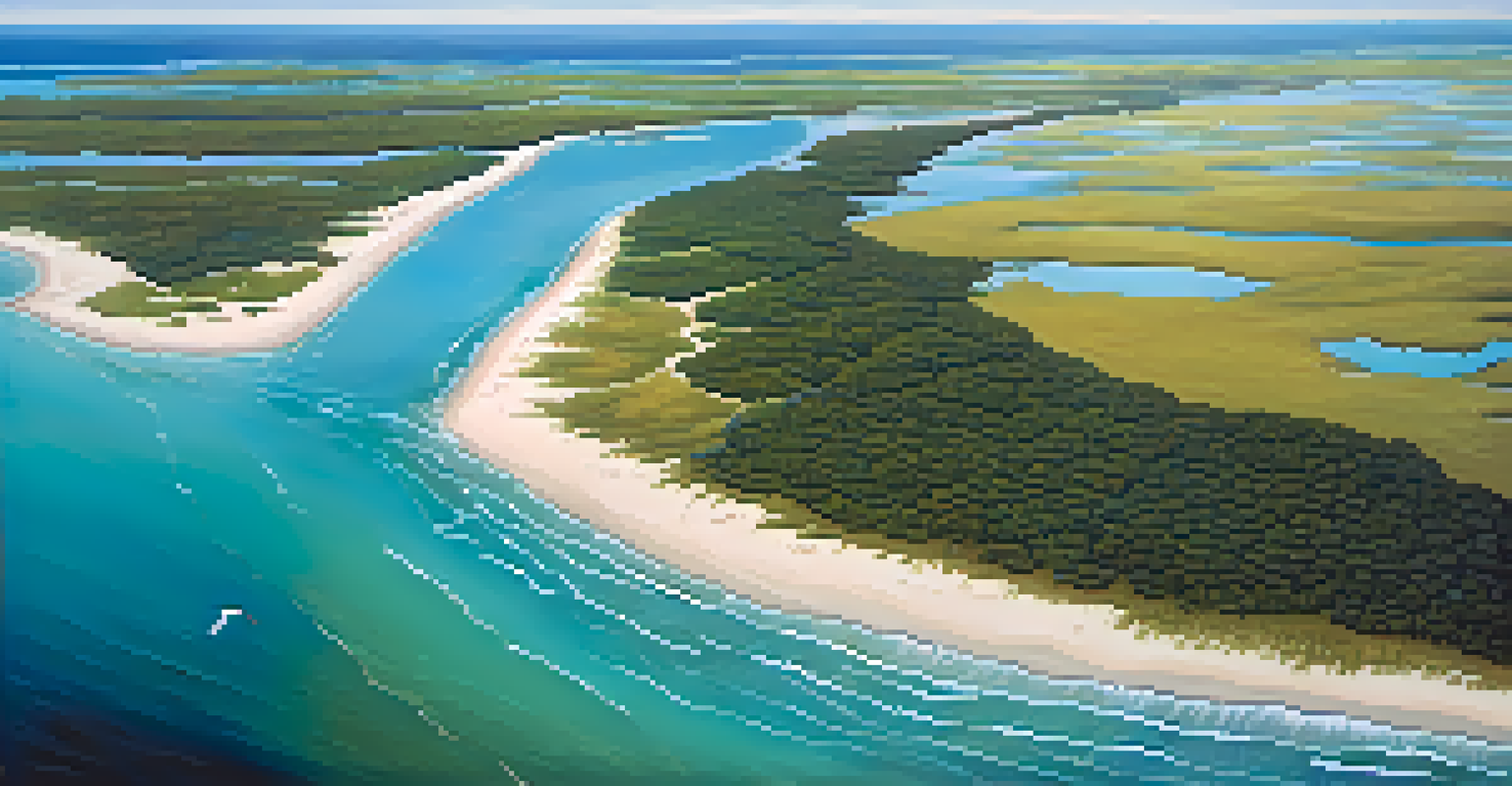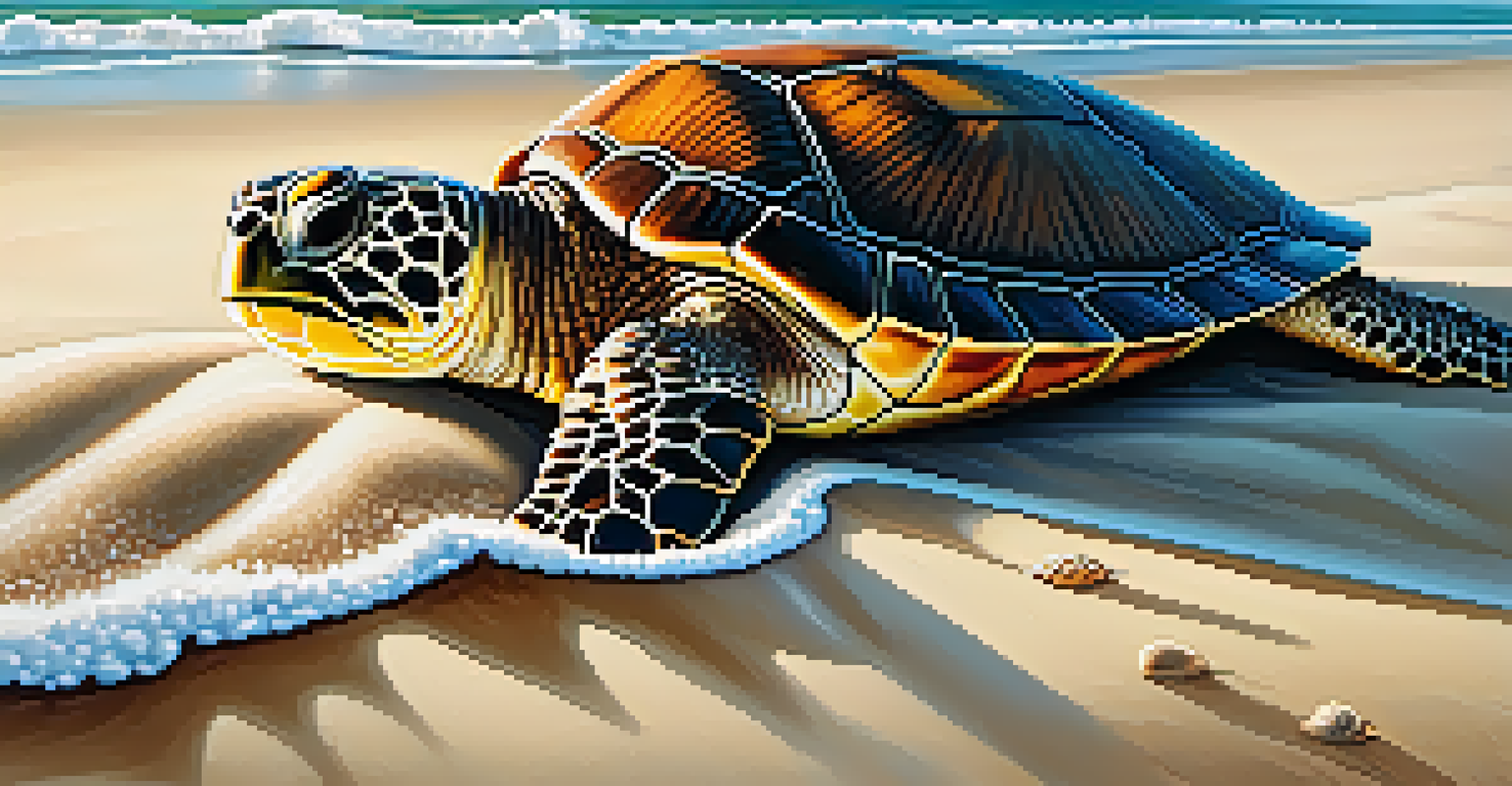Georgia's Coastal Ecosystems and Their Conservation Needs

Introduction to Georgia's Rich Coastal Ecosystems
Georgia's coastal ecosystems are a treasure trove of biodiversity, encompassing marshes, estuaries, and barrier islands. These habitats are not just beautiful; they play a crucial role in supporting wildlife and protecting our shorelines. From the intricate salt marshes teeming with crabs and fish to the serene beaches frequented by migratory birds, each ecosystem has its unique charm and ecological function.
In every walk with nature one receives far more than he seeks.
The coastal areas of Georgia are home to a variety of species, including endangered ones like the loggerhead sea turtle. These ecosystems serve as vital nurseries for fish and shellfish, showcasing the delicate balance of life that thrives here. Understanding these ecosystems is essential for appreciating their complexity and the interdependence of the organisms within them.
As we explore the importance of these ecosystems, it's vital to recognize that they face numerous threats. Human activities, climate change, and pollution are all putting pressure on these natural habitats, leading to degradation and loss of biodiversity. This article will delve into the specific conservation needs of Georgia's coastal ecosystems and what we can do to protect them.
Key Coastal Ecosystems in Georgia
Among the most significant coastal ecosystems in Georgia are salt marshes, which are often referred to as the 'nurseries of the sea.' These marshes provide shelter and food for countless juvenile fish and invertebrates, making them essential for sustaining marine life. Additionally, they act as natural filters, improving water quality by trapping pollutants.

Estuaries, where freshwater meets saltwater, are another vital component. They serve as transition zones that support a diverse array of plant and animal species. The combination of nutrients from river systems and the ocean creates an environment rich in biodiversity, making estuaries bustling hubs of life.
Vital Coastal Ecosystems at Risk
Georgia's coastal ecosystems face significant threats from habitat loss, pollution, and climate change.
Finally, the barrier islands, like Sapelo and Cumberland, provide unique habitats that protect inland areas from storms and erosion. They are also home to varied ecosystems, including dunes, maritime forests, and tidal flats. Each of these ecosystems plays a crucial role in maintaining the health of Georgia's coastal environment.
Threats to Coastal Ecosystems in Georgia
Despite their importance, Georgia's coastal ecosystems are under constant threat from a variety of sources. One of the most pressing issues is habitat loss due to coastal development. As cities expand and resorts are built, vital habitats are often destroyed or fragmented, putting immense pressure on the wildlife that depends on them.
The environment is where we all meet; where we all have a mutual interest; it is the one thing all of us share.
Pollution is another significant concern. Runoff from agriculture, urban areas, and industrial sites introduces harmful chemicals into the waterways, affecting both water quality and marine life. The impact of plastic pollution is particularly alarming, as it can entangle or be ingested by marine species, leading to injury or death.
Climate change further exacerbates these challenges, causing rising sea levels and increasing water temperatures. These changes threaten to alter the delicate balance of these ecosystems, potentially leading to the loss of species and habitats. Understanding these threats is crucial for developing effective conservation strategies.
The Importance of Conservation Efforts
Conserving Georgia's coastal ecosystems is not just about protecting wildlife; it's also about safeguarding our own future. Healthy coastal ecosystems provide essential services such as flood protection, water filtration, and carbon sequestration. These services help mitigate the effects of climate change and preserve the quality of life for local communities.
Moreover, these ecosystems support local economies through fisheries and tourism. By conserving these areas, we ensure that future generations can enjoy the beauty and resources that Georgia's coasts offer. The economic benefits of conservation are significant, demonstrating that protecting the environment is also a sound financial investment.
Conservation is Crucial for Future
Protecting these ecosystems ensures essential services, supports local economies, and preserves biodiversity.
Public awareness and community involvement are key to successful conservation efforts. Engaging local residents and stakeholders in conservation initiatives fosters a sense of ownership and responsibility, encouraging sustainable practices that benefit both the environment and the community.
Successful Conservation Initiatives in Georgia
Several successful conservation initiatives have emerged in Georgia, showcasing the potential for positive change. Organizations like the Georgia Department of Natural Resources and various non-profits have worked tirelessly to restore and protect crucial habitats. Efforts such as the restoration of marshlands and the protection of nesting sites for sea turtles highlight the impact of focused conservation work.
Community-based programs, like the Adopt-a-Wetland initiative, empower residents to take an active role in preserving their local environments. These programs often involve clean-up events, educational workshops, and monitoring wildlife, fostering a connection between people and their natural surroundings.
Collaboration among government agencies, nonprofits, and local communities is essential for the success of these initiatives. By pooling resources and knowledge, stakeholders can create more effective conservation strategies that address the specific needs of Georgia's coastal ecosystems.
Role of Education in Ecosystem Conservation
Education plays a pivotal role in the conservation of Georgia's coastal ecosystems. By raising awareness about the importance of these habitats, we can inspire individuals to take action. Educational programs in schools, community centers, and through local organizations help inform the public about the threats facing these ecosystems and how they can contribute to conservation efforts.
Engaging younger generations is especially important, as they will be the stewards of our environment in the future. Field trips to coastal areas, interactive workshops, and hands-on conservation projects can instill a sense of responsibility and passion for protecting nature. The more people know about the ecosystems around them, the more likely they are to advocate for their preservation.
Education Drives Conservation Efforts
Raising awareness and engaging communities are key to fostering sustainable practices and protecting coastal habitats.
Moreover, education can foster a culture of sustainability, encouraging individuals to adopt eco-friendly practices in their daily lives. Simple actions, like reducing plastic use or participating in local clean-up efforts, can collectively make a significant difference in the health of Georgia's coastal ecosystems.
How You Can Help Protect Coastal Ecosystems
Everyone can play a part in protecting Georgia's coastal ecosystems, and it starts with awareness. By educating yourself about the issues these environments face, you can make informed decisions that contribute to their preservation. Whether it's supporting local conservation groups or advocating for sustainable policies, your voice matters.
Participating in community clean-ups, promoting recycling, and reducing waste can have a direct positive impact on the health of coastal waters. Additionally, choosing to support businesses that prioritize sustainability can create economic incentives for conservation efforts. Every small action adds up to make a significant difference.

Lastly, sharing your knowledge and passion for conservation with others can help spread the message. Encourage friends and family to get involved and raise awareness about the importance of protecting Georgia's coastal ecosystems. Together, we can ensure these beautiful and vital habitats are preserved for generations to come.